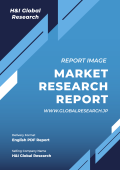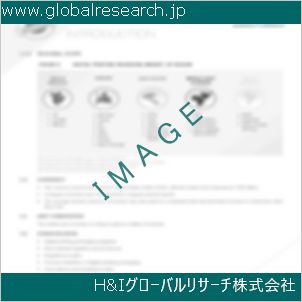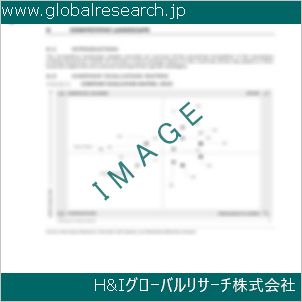1 Polypropylene for 3D Printing Market Overview
1.1 Product Definition
1.2 Polypropylene for 3D Printing Segment by Type
1.2.1 Global Polypropylene for 3D Printing Market Value Growth Rate Analysis by Type 2022 VS 2029
1.2.2 Isotactic Polypropylene
1.2.3 Atactic Polypropylene
1.2.4 Syndiotactic Polypropylene
1.3 Polypropylene for 3D Printing Segment by Application
1.3.1 Global Polypropylene for 3D Printing Market Value Growth Rate Analysis by Application: 2022 VS 2029
1.3.2 Automotive
1.3.3 Electronic Products
1.3.4 Consumer Goods
1.3.5 Industrial Goods
1.4 Global Market Growth Prospects
1.4.1 Global Polypropylene for 3D Printing Production Value Estimates and Forecasts (2018-2029)
1.4.2 Global Polypropylene for 3D Printing Production Capacity Estimates and Forecasts (2018-2029)
1.4.3 Global Polypropylene for 3D Printing Production Estimates and Forecasts (2018-2029)
1.4.4 Global Polypropylene for 3D Printing Market Average Price Estimates and Forecasts (2018-2029)
1.5 Assumptions and Limitations
2 Market Competition by Manufacturers
2.1 Global Polypropylene for 3D Printing Production Market Share by Manufacturers (2018-2023)
2.2 Global Polypropylene for 3D Printing Production Value Market Share by Manufacturers (2018-2023)
2.3 Global Key Players of Polypropylene for 3D Printing, Industry Ranking, 2021 VS 2022 VS 2023
2.4 Global Polypropylene for 3D Printing Market Share by Company Type (Tier 1, Tier 2 and Tier 3)
2.5 Global Polypropylene for 3D Printing Average Price by Manufacturers (2018-2023)
2.6 Global Key Manufacturers of Polypropylene for 3D Printing, Manufacturing Base Distribution and Headquarters
2.7 Global Key Manufacturers of Polypropylene for 3D Printing, Product Offered and Application
2.8 Global Key Manufacturers of Polypropylene for 3D Printing, Date of Enter into This Industry
2.9 Polypropylene for 3D Printing Market Competitive Situation and Trends
2.9.1 Polypropylene for 3D Printing Market Concentration Rate
2.9.2 Global 5 and 10 Largest Polypropylene for 3D Printing Players Market Share by Revenue
2.10 Mergers & Acquisitions, Expansion
3 Polypropylene for 3D Printing Production by Region
3.1 Global Polypropylene for 3D Printing Production Value Estimates and Forecasts by Region: 2018 VS 2022 VS 2029
3.2 Global Polypropylene for 3D Printing Production Value by Region (2018-2029)
3.2.1 Global Polypropylene for 3D Printing Production Value Market Share by Region (2018-2023)
3.2.2 Global Forecasted Production Value of Polypropylene for 3D Printing by Region (2024-2029)
3.3 Global Polypropylene for 3D Printing Production Estimates and Forecasts by Region: 2018 VS 2022 VS 2029
3.4 Global Polypropylene for 3D Printing Production by Region (2018-2029)
3.4.1 Global Polypropylene for 3D Printing Production Market Share by Region (2018-2023)
3.4.2 Global Forecasted Production of Polypropylene for 3D Printing by Region (2024-2029)
3.5 Global Polypropylene for 3D Printing Market Price Analysis by Region (2018-2023)
3.6 Global Polypropylene for 3D Printing Production and Value, Year-over-Year Growth
3.6.1 North America Polypropylene for 3D Printing Production Value Estimates and Forecasts (2018-2029)
3.6.2 Europe Polypropylene for 3D Printing Production Value Estimates and Forecasts (2018-2029)
3.6.3 China Polypropylene for 3D Printing Production Value Estimates and Forecasts (2018-2029)
3.6.4 Japan Polypropylene for 3D Printing Production Value Estimates and Forecasts (2018-2029)
4 Polypropylene for 3D Printing Consumption by Region
4.1 Global Polypropylene for 3D Printing Consumption Estimates and Forecasts by Region: 2018 VS 2022 VS 2029
4.2 Global Polypropylene for 3D Printing Consumption by Region (2018-2029)
4.2.1 Global Polypropylene for 3D Printing Consumption by Region (2018-2023)
4.2.2 Global Polypropylene for 3D Printing Forecasted Consumption by Region (2024-2029)
4.3 North America
4.3.1 North America Polypropylene for 3D Printing Consumption Growth Rate by Country: 2018 VS 2022 VS 2029
4.3.2 North America Polypropylene for 3D Printing Consumption by Country (2018-2029)
4.3.3 United States
4.3.4 Canada
4.4 Europe
4.4.1 Europe Polypropylene for 3D Printing Consumption Growth Rate by Country: 2018 VS 2022 VS 2029
4.4.2 Europe Polypropylene for 3D Printing Consumption by Country (2018-2029)
4.4.3 Germany
4.4.4 France
4.4.5 U.K.
4.4.6 Italy
4.4.7 Russia
4.5 Asia Pacific
4.5.1 Asia Pacific Polypropylene for 3D Printing Consumption Growth Rate by Region: 2018 VS 2022 VS 2029
4.5.2 Asia Pacific Polypropylene for 3D Printing Consumption by Region (2018-2029)
4.5.3 China
4.5.4 Japan
4.5.5 South Korea
4.5.6 China Taiwan
4.5.7 Southeast Asia
4.5.8 India
4.6 Latin America, Middle East & Africa
4.6.1 Latin America, Middle East & Africa Polypropylene for 3D Printing Consumption Growth Rate by Country: 2018 VS 2022 VS 2029
4.6.2 Latin America, Middle East & Africa Polypropylene for 3D Printing Consumption by Country (2018-2029)
4.6.3 Mexico
4.6.4 Brazil
4.6.5 Turkey
5 Segment by Type
5.1 Global Polypropylene for 3D Printing Production by Type (2018-2029)
5.1.1 Global Polypropylene for 3D Printing Production by Type (2018-2023)
5.1.2 Global Polypropylene for 3D Printing Production by Type (2024-2029)
5.1.3 Global Polypropylene for 3D Printing Production Market Share by Type (2018-2029)
5.2 Global Polypropylene for 3D Printing Production Value by Type (2018-2029)
5.2.1 Global Polypropylene for 3D Printing Production Value by Type (2018-2023)
5.2.2 Global Polypropylene for 3D Printing Production Value by Type (2024-2029)
5.2.3 Global Polypropylene for 3D Printing Production Value Market Share by Type (2018-2029)
5.3 Global Polypropylene for 3D Printing Price by Type (2018-2029)
6 Segment by Application
6.1 Global Polypropylene for 3D Printing Production by Application (2018-2029)
6.1.1 Global Polypropylene for 3D Printing Production by Application (2018-2023)
6.1.2 Global Polypropylene for 3D Printing Production by Application (2024-2029)
6.1.3 Global Polypropylene for 3D Printing Production Market Share by Application (2018-2029)
6.2 Global Polypropylene for 3D Printing Production Value by Application (2018-2029)
6.2.1 Global Polypropylene for 3D Printing Production Value by Application (2018-2023)
6.2.2 Global Polypropylene for 3D Printing Production Value by Application (2024-2029)
6.2.3 Global Polypropylene for 3D Printing Production Value Market Share by Application (2018-2029)
6.3 Global Polypropylene for 3D Printing Price by Application (2018-2029)
7 Key Companies Profiled
7.1 BASF SE
7.1.1 BASF SE Polypropylene for 3D Printing Corporation Information
7.1.2 BASF SE Polypropylene for 3D Printing Product Portfolio
7.1.3 BASF SE Polypropylene for 3D Printing Production, Value, Price and Gross Margin (2018-2023)
7.1.4 BASF SE Main Business and Markets Served
7.1.5 BASF SE Recent Developments/Updates
7.2 SABIC
7.2.1 SABIC Polypropylene for 3D Printing Corporation Information
7.2.2 SABIC Polypropylene for 3D Printing Product Portfolio
7.2.3 SABIC Polypropylene for 3D Printing Production, Value, Price and Gross Margin (2018-2023)
7.2.4 SABIC Main Business and Markets Served
7.2.5 SABIC Recent Developments/Updates
7.3 Braskem
7.3.1 Braskem Polypropylene for 3D Printing Corporation Information
7.3.2 Braskem Polypropylene for 3D Printing Product Portfolio
7.3.3 Braskem Polypropylene for 3D Printing Production, Value, Price and Gross Margin (2018-2023)
7.3.4 Braskem Main Business and Markets Served
7.3.5 Braskem Recent Developments/Updates
7.4 Exxon Mobil Corporation
7.4.1 Exxon Mobil Corporation Polypropylene for 3D Printing Corporation Information
7.4.2 Exxon Mobil Corporation Polypropylene for 3D Printing Product Portfolio
7.4.3 Exxon Mobil Corporation Polypropylene for 3D Printing Production, Value, Price and Gross Margin (2018-2023)
7.4.4 Exxon Mobil Corporation Main Business and Markets Served
7.4.5 Exxon Mobil Corporation Recent Developments/Updates
7.5 Sculpteo
7.5.1 Sculpteo Polypropylene for 3D Printing Corporation Information
7.5.2 Sculpteo Polypropylene for 3D Printing Product Portfolio
7.5.3 Sculpteo Polypropylene for 3D Printing Production, Value, Price and Gross Margin (2018-2023)
7.5.4 Sculpteo Main Business and Markets Served
7.5.5 Sculpteo Recent Developments/Updates
7.6 Simplify3D
7.6.1 Simplify3D Polypropylene for 3D Printing Corporation Information
7.6.2 Simplify3D Polypropylene for 3D Printing Product Portfolio
7.6.3 Simplify3D Polypropylene for 3D Printing Production, Value, Price and Gross Margin (2018-2023)
7.6.4 Simplify3D Main Business and Markets Served
7.6.5 Simplify3D Recent Developments/Updates
7.7 EVOLV3D
7.7.1 EVOLV3D Polypropylene for 3D Printing Corporation Information
7.7.2 EVOLV3D Polypropylene for 3D Printing Product Portfolio
7.7.3 EVOLV3D Polypropylene for 3D Printing Production, Value, Price and Gross Margin (2018-2023)
7.7.4 EVOLV3D Main Business and Markets Served
7.7.5 EVOLV3D Recent Developments/Updates
7.8 Dow
7.8.1 Dow Polypropylene for 3D Printing Corporation Information
7.8.2 Dow Polypropylene for 3D Printing Product Portfolio
7.8.3 Dow Polypropylene for 3D Printing Production, Value, Price and Gross Margin (2018-2023)
7.8.4 Dow Main Business and Markets Served
7.7.5 Dow Recent Developments/Updates
7.9 Mitsubishi Chemical Holdings
7.9.1 Mitsubishi Chemical Holdings Polypropylene for 3D Printing Corporation Information
7.9.2 Mitsubishi Chemical Holdings Polypropylene for 3D Printing Product Portfolio
7.9.3 Mitsubishi Chemical Holdings Polypropylene for 3D Printing Production, Value, Price and Gross Margin (2018-2023)
7.9.4 Mitsubishi Chemical Holdings Main Business and Markets Served
7.9.5 Mitsubishi Chemical Holdings Recent Developments/Updates
8 Industry Chain and Sales Channels Analysis
8.1 Polypropylene for 3D Printing Industry Chain Analysis
8.2 Polypropylene for 3D Printing Key Raw Materials
8.2.1 Key Raw Materials
8.2.2 Raw Materials Key Suppliers
8.3 Polypropylene for 3D Printing Production Mode & Process
8.4 Polypropylene for 3D Printing Sales and Marketing
8.4.1 Polypropylene for 3D Printing Sales Channels
8.4.2 Polypropylene for 3D Printing Distributors
8.5 Polypropylene for 3D Printing Customers
9 Polypropylene for 3D Printing Market Dynamics
9.1 Polypropylene for 3D Printing Industry Trends
9.2 Polypropylene for 3D Printing Market Drivers
9.3 Polypropylene for 3D Printing Market Challenges
9.4 Polypropylene for 3D Printing Market Restraints
10 Research Finding and Conclusion
11 Methodology and Data Source
11.1 Methodology/Research Approach
11.1.1 Research Programs/Design
11.1.2 Market Size Estimation
11.1.3 Market Breakdown and Data Triangulation
11.2 Data Source
11.2.1 Secondary Sources
11.2.2 Primary Sources
11.3 Author List
11.4 Disclaimer
| ※参考情報 ポリプロピレン(PP)は、熱可塑性プラスチックの一種であり、広範な用途で知られています。特に、3Dプリント技術の発展とともに、ポリプロピレンはその特性から注目される材料の一つとして位置付けられています。以下に、ポリプロピレンの基本的な定義や特徴、種類、用途、そして関連技術について詳しく述べます。 ポリプロピレンは、プロピレンという単純な炭化水素を重合することによって得られるポリマーです。化学式は(C3H6)nであり、その分子構造は直鎖状で、結晶性が高いことが特徴的です。この結晶性はポリプロピレンを特徴づける重要な要素であり、その物理的特性や加工特性に大きく影響を与えます。他の熱可塑性プラスチックと比較して、ポリプロピレンは優れた耐熱性、耐薬品性、そして機械的強度を持っているため、工業材料として広く利用されています。 3Dプリント用ポリプロピレンは、主にFDM(溶融積層造形)方式で使用されます。この技術は、熱可塑性フィラメントを加熱しながら層を重ねていくことで、三次元形状の部品を形成する方法です。ポリプロピレン用のフィラメントは、耐久性があり、軽量な部品の製造に適しています。また、ポリプロピレンはその化学的特性から、食品包装や医療機器の部品など、衛生面が重視される用途でも使用されています。 ポリプロピレンにはさまざまな特性があり、その中でも特に重要なものは耐薬品性と柔軟性です。耐薬品性については、多くの化学薬品に対しても優れた耐性を示すため、化学工業や医療分野において採用されています。一方、柔軟性は、製品における耐衝撃性や製作後の加工性に寄与します。 ポリプロピレンは、主にホモポリマーと共重合体の2つのタイプに分類されます。ホモポリマーは、単一のモノマーからなるポリプロピレンであり、強い結晶性が特徴です。これに対し、共重合体は、異なるモノマーを組み合わせたもので、柔軟性や衝撃強度の向上が期待できます。これらの種類は、フィラメントの製造においても影響を与え、用途に応じた材料選定が重要になります。 ポリプロピレンの用途は非常に多様であり、3Dプリントによる製造はその一環として位置づけられています。例えば、自動車部品、家電製品の構成要素、日用品などの製造において、ポリプロピレンは優れた選択肢となります。特に、3Dプリント技術を利用することで、複雑な形状や軽量化が可能となり、設計自由度が大幅に向上します。 3Dプリンタを使用したポリプロピレンの加工は、いくつかの技術的な課題も伴います。具体的には、積層時の収縮やひび割れ、粘着性の不足が挙げられます。これらの課題に対処するために、さまざまな添加剤やブレンド材料が研究・開発されており、段階的に改善が行われています。また、温度管理や印刷条件の最適化も重要な要素であり、これによって品質の向上が図られます。 関連技術としては、ポリプロピレンの表面処理技術が有効です。たとえば、表面にコーティングを施すことで、塗装性や接着性を改善することができます。本業界では、これによりより高度な機械的特性や外観が求められる製品を生み出すことが可能となります。 ポリプロピレンを利用した3Dプリンティングは、今後さらに多くの分野で普及が期待されています。特に、環境への配慮からリサイクル可能な材料の利用が重視されている現在、ポリプロピレンの利点が注目されています。リサイクル技術の進展により、製造プロセス全体での資源効率の向上を目指すことが求められています。 結論として、3Dプリント用ポリプロピレンは、その特性や加工特性、さらに幅広い用途によって、今後も注目される材料であると言えます。設計の自由度や加工の効率化が進む中で、業界全体がその利用を模索し続けることが期待されます。これにより、新しい製品開発や技術革新が促進されることが見込まれ、ポリプロピレンの可能性はますます広がるでしょう。これからの技術進展や市場の動向に目を向けながら、ポリプロピレンの役割がどのように変化していくのかを注視していく必要があります。 |
❖ 免責事項 ❖
http://www.globalresearch.jp/disclaimer












